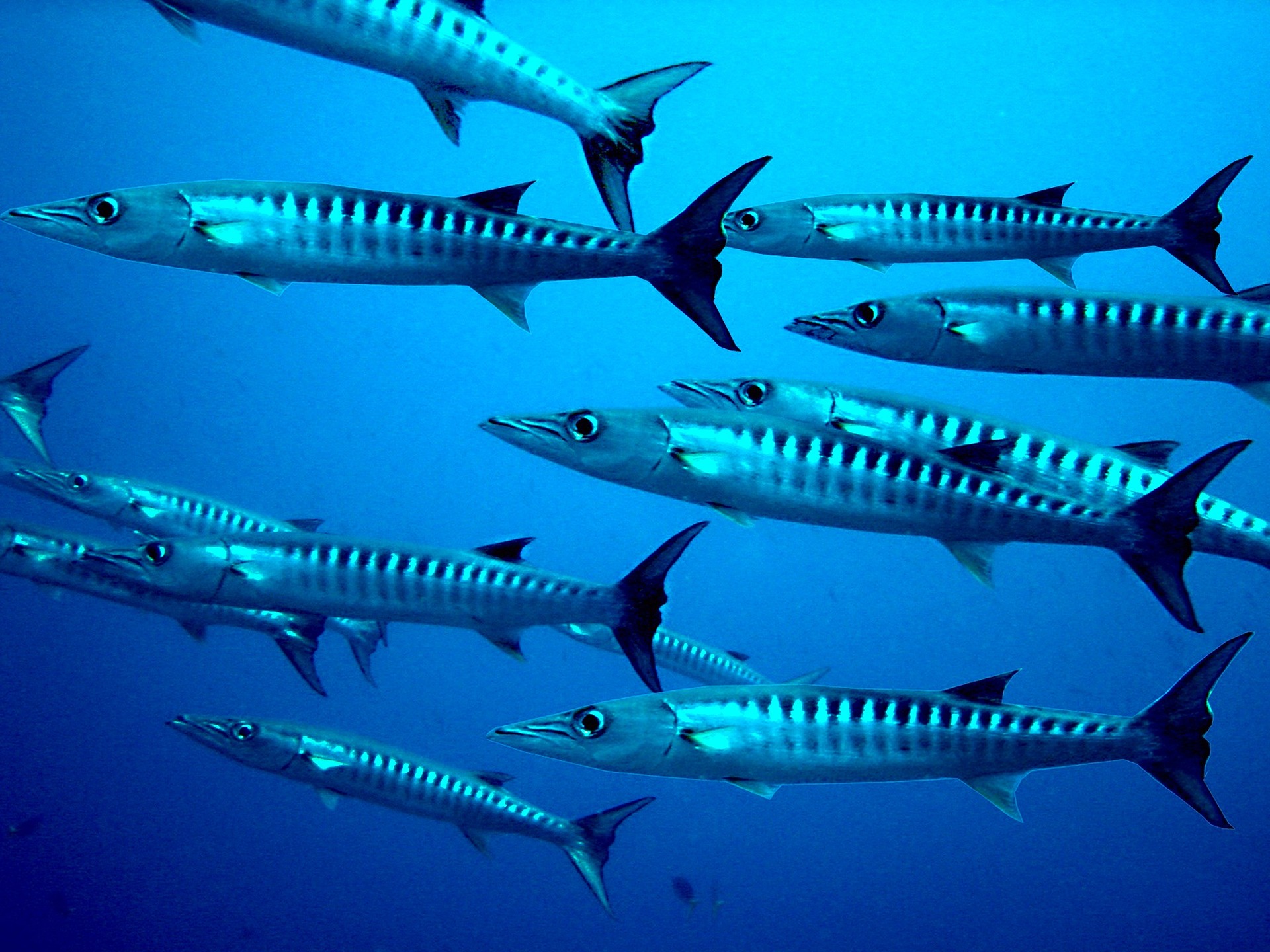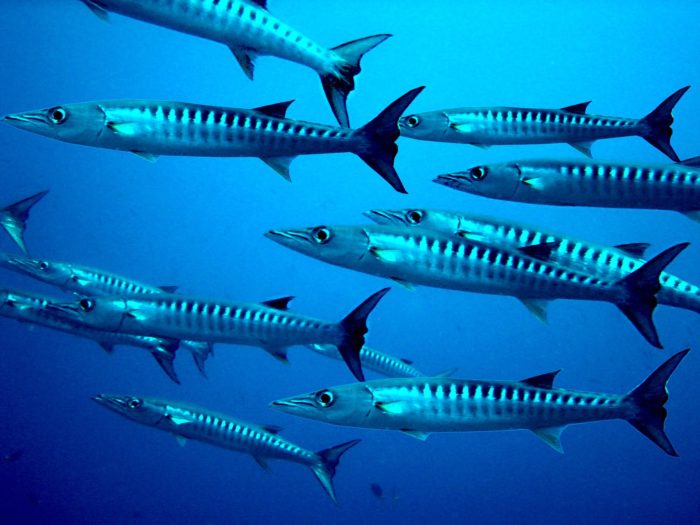
Sea Wonder: Barracuda

Twenty-eight species of barracuda call the subtropical and tropical ocean home, including a number of sites in the National Marine Sanctuary System!
Appearance
These muscular fish have torpedo-shaped bodies and, depending on their species, can reach sizes between 18 inches and 10 feet long, and across all 28 species females usually grow to be larger than males. The record weight for a barracuda that was caught is 103 pounds!
They have a little bit of an underbite (where the lower jaw sticks out farther than the top jaw), revealing an intimidating set of razor-sharp teeth used for hunting quick-swimming fish; some of these teeth even point backwards to prevent their prey from escaping.
Their backs are a shiny blue-gray while their sides and bellies are silver and white, known as countershading for camouflage in the marine environment.
Diet and Habitat
Barracuda eat smaller fish, including herring, anchovies, mullet, tuna, grunts, jacks, and snapper. They are opportunistic feeders, though, so they aren’t too picky about what they eat! They primarily locate their food using their developed sense of sight, and their teeth and ability to swim more than 30 miles per hour at burst speeds helps them catch their prey with relative ease. Fully grown barracuda have few natural predators, which include large sharks, tuna, and goliath grouper; juveniles may fall prey to smaller predators.
These fish are sometimes seen in the open ocean, but usually prefer to call coral reefs, mangroves, and seagrass beds due to the availability of prey. Scientists and explorers have documented barracudas at depths of around 300 feet, though.
Life History
Barracuda are usually solitary but are sometimes found in small aggregations near feeding sites. They form large spawning groups annually in deeper waters where males and females release gametes into open water where they are fertilized and transported via ocean currents. Larvae hatch a few days or weeks after fertilization and look nothing like the adult fish we recognize. These larvae are a source of food for smaller animals like crabs, fish, and even barnacles. Barracuda larvae will seek safety in shallow, vegetated areas such as estuaries, the submerged roots of mangrove forests, and seagrass beds.
Most larvae don’t survive this stage of life (which is why females produce so many eggs each season), but the lucky ones will undergo metamorphosis and turn into juvenile fish, which look more like adult barracuda. When they reach about an inch in length, juveniles will move to more open waters, but will stay close to their nursery area for their first year of life. In their second year, they move to deeper areas of the ocean where they will they spend the rest of their lives. These fish reach sexual maturity when they reach about two feet in length, which happens for males at around two years old and females at around four years old. Scientists believe barracuda can live to be at least 14 years old.
Threats and Conservation
Barracuda are important parts of marine food webs because they remove sick and vulnerable individuals from prey fish populations. They are generally considered sport fish and usually aren’t safe for humans to eat, so populations remain fairly abundant. However, anything that threatens coral reefs, seagrass beds, or mangrove forests is a threat to barracudas. These include coastal development, ocean acidification, marine debris pollution, overfishing, boating accidents, and nutrification that leads to harmful algal blooms. We can all do our part to protect barracuda and their habitats by refusing single-use plastic items, reducing our carbon footprints, choosing sustainable and responsibly-sourced seafood options, and encouraging our elected officials at all levels to protect and preserve the ocean and the waterways that lead to it.
